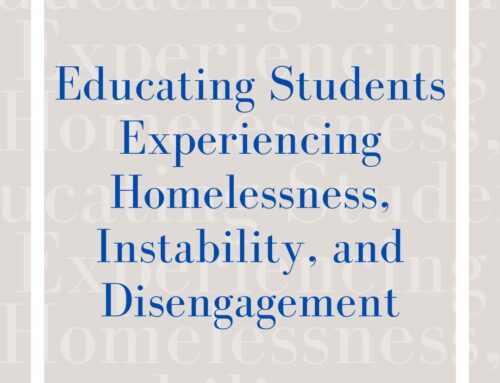How do your relationships with schools and/or community supports aid in the academic progress of high-risk children?
It is important for you to have answers to this “how” question. It is important that you define and evaluate school/community relationships: Which ones are really successful, and which ones are toxic to children and families? Which ones have built-in positive communication, and which ones block positive communication? In other words, which relationships need help so that children get the assistance they need?
Working for the benefit of the at-risk child who is unavailable to learn means working in teams. All community entities come to the table to work together with the purpose of engaging the parents, demonstrating respect, and opening positive dialog.
Schools and agencies have seen and know these children and families but have worked within their own milieu to assist in any way they can. They have not had the opportunity to sit with all agencies and schools at one table to understand what others have already done to help the child. To accomplish what is necessary to build successful teams, a shift of consciousness must take place within each professional and agency in order to provide the resources, supports, information sharing, and knowledge that will truly make the needed difference. Of great importance is providing a safe supporting atmosphere in which the parents can begin making positive choices. This can be done, sometimes with an entire team and sometimes with a coach who will come to team meetings with the parents. Either way, the goal here is parent engagement, to empower the parents to begin change and write a flexible family plan. The parent is an active member of the team with important input. With supports in place, the plan can go into action. As this work progresses, the child can feel more confident about his/her home relationships, and this leads to each child’s success and academic progress.
Family issues tend to build upon themselves until they impact the child’s academic performance dramatically. We often have few solutions, and we have little success with children who have outside issues destroying their educational experience. We recognize their truancy, their low test scores, their inappropriate behaviors, and their low academic performance—along with many other symptoms. This is often the child who takes extra teaching time away from other students.
There is, I am sure, more than one way to make a difference in the lives of these children. However, I have found the most successful way is through team effort. Team members learn much about working together and find that it is practical and assists in their everyday responsibilities. By bringing together the schools, social services, mental health, and other helping community agencies, progress is assured. When our thinking transitions into teamwork, doors and windows will open into a larger arena of ideas where children receive the help they so badly need. These good ideas then expand out into communities.
There are 14 million children in this country living in poverty*. There are other children, not in poverty, who need help because they live in chaos or situations not addressed in the home. Together, for a successful and functional future for our communities and our nation, we must address these children and their parents in a timely, supportive, and structured way. Building strong positive community relationships is where help begins.
What is happening in your school district or community agency to address the “unavailable child” and his/her family? Does it help the child and family grow beyond their current dysfunction? A profound difference needs to be made in the way we engage parents and help to facilitate that important move from where they are to where they need to be to stabilize their families.
Please share with me.
*Children’s Defense Fund
Resource: Collaboration for Kids: Early Intervention Tools for Schools and Communities








